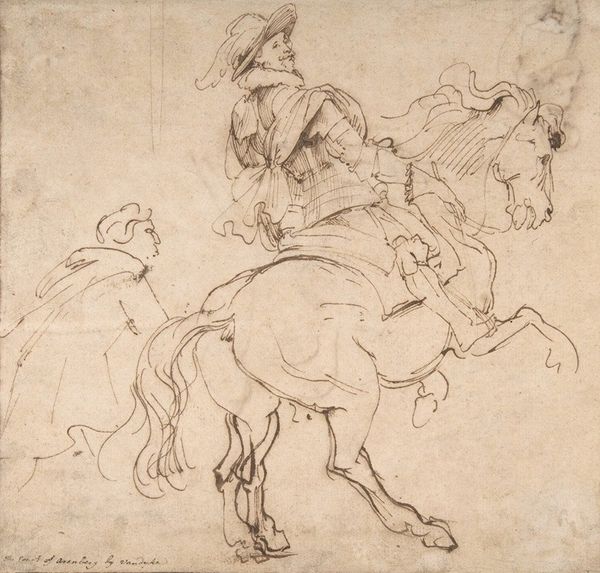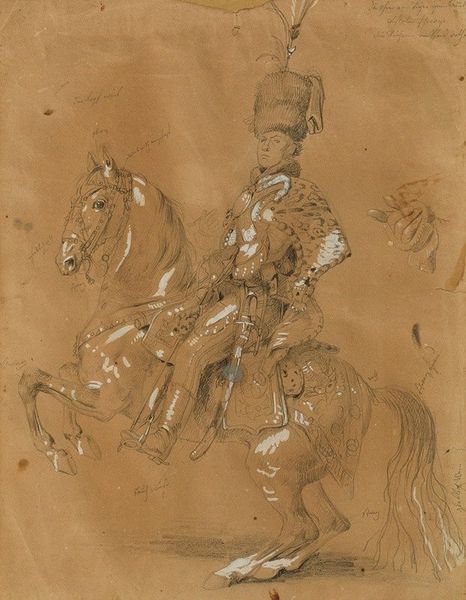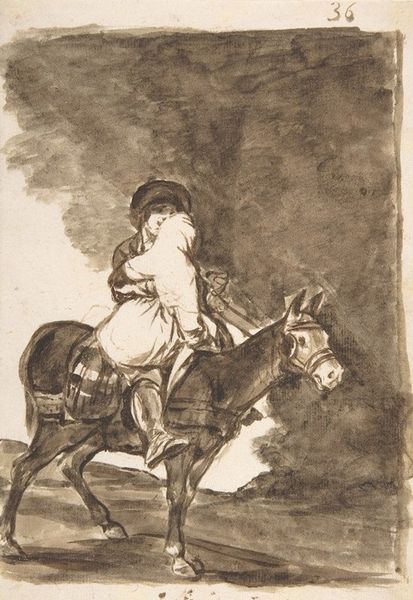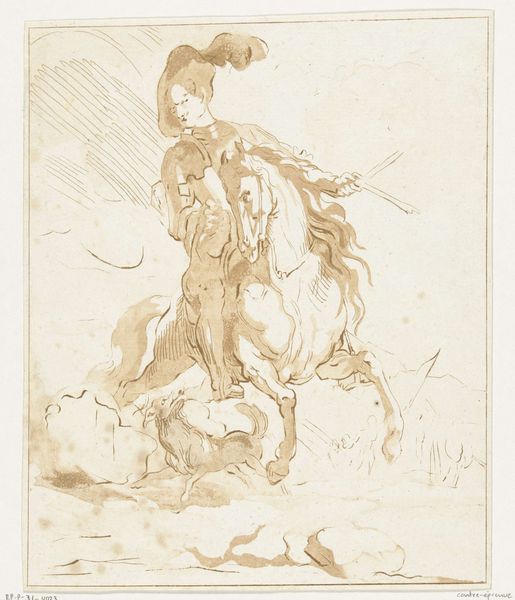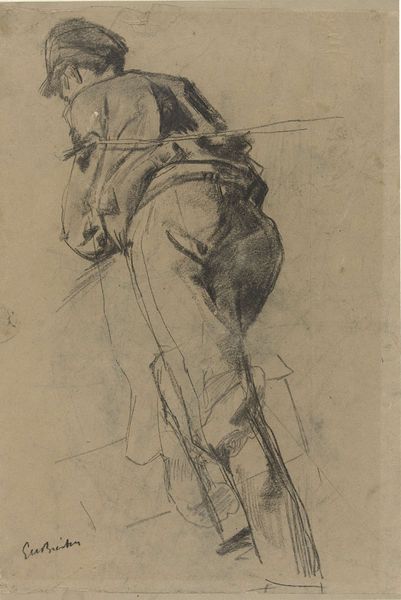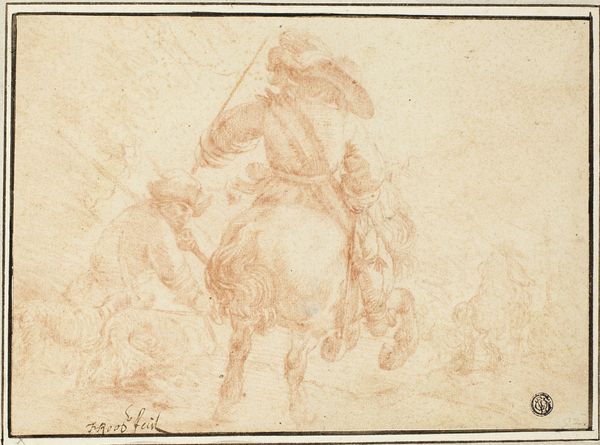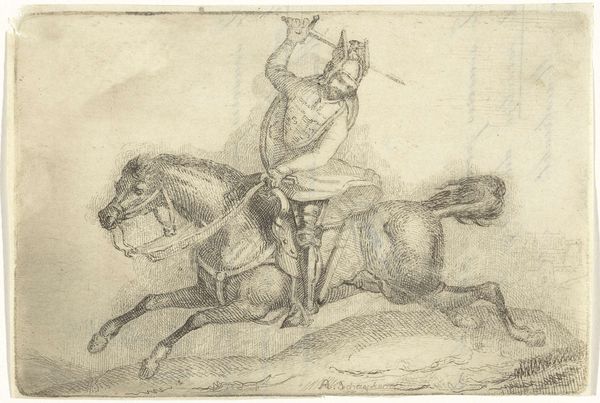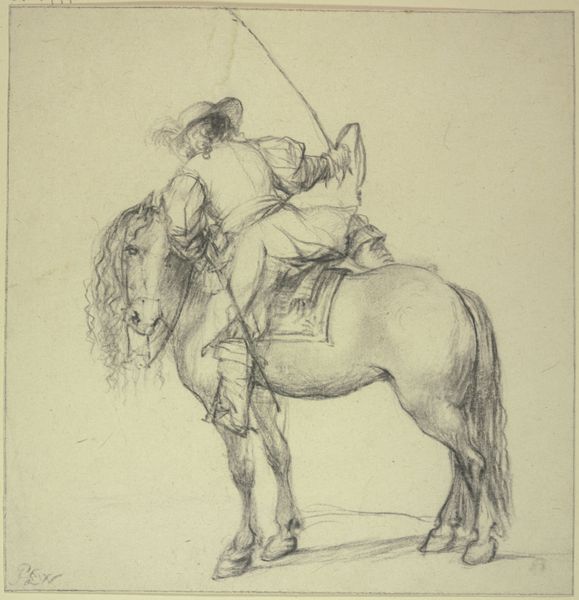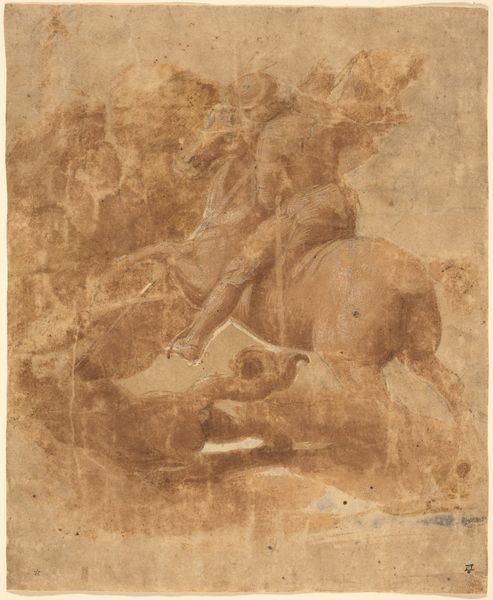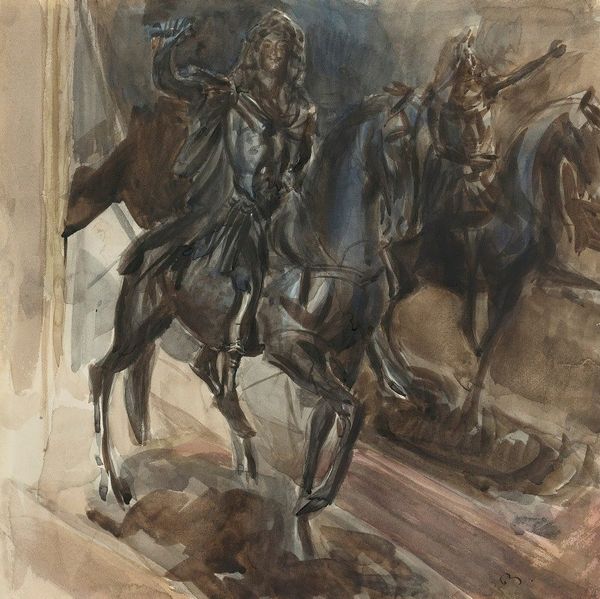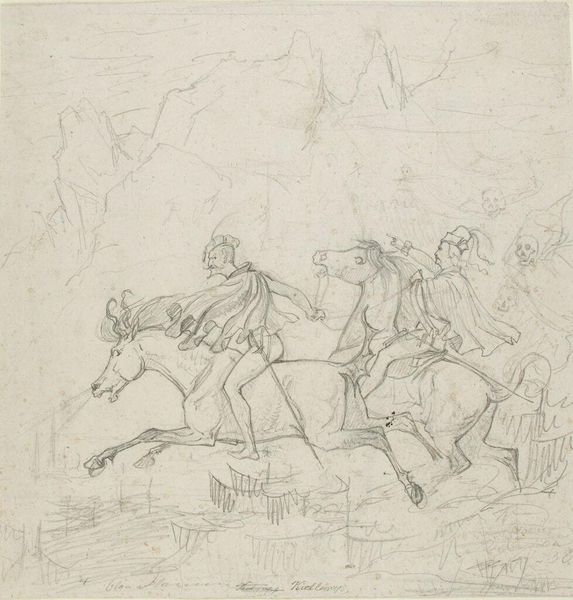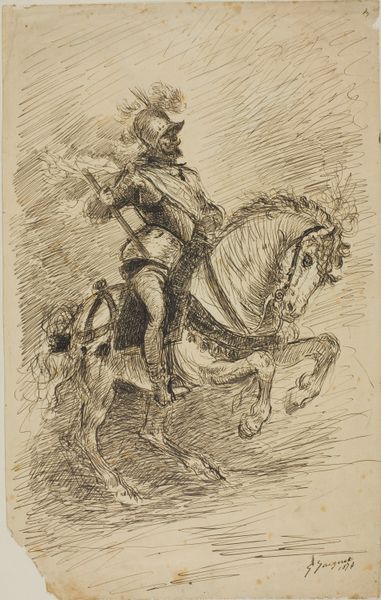
drawing, ink
#
drawing
#
charcoal drawing
#
figuration
#
ink
#
romanticism
#
line
#
history-painting
Copyright: Public Domain: Artvee
Curator: I’m immediately drawn to the sense of motion. Even unfinished, the image bursts with an urgent energy, all raw edges and implied action. Editor: Precisely. What we’re seeing here is Eugène Delacroix's "Armored Figure on Horseback," a drawing in ink and charcoal from around 1828. Notice how the figure, though central, feels like it's emerging from a wider historical narrative. Curator: You can almost feel the weight of history bearing down, can't you? That figure, poised on the rearing horse... there's a potent sense of foreboding, but also a clear cultural desire to embody a particular ideal of military authority. Is it accurate to suggest the artist also considered historical conflicts? Editor: Absolutely. Delacroix lived in a time of huge social and political upheaval in France; deeply affected by historical accounts, many romantic artists saw conflict, especially during the Middle Ages, as moments where societies renegotiate their principles, even the moral certainties on which they stood. In our painting, it's not just about the historical details of medieval battles or wars but the feelings, thoughts, and responses caused by such dramatic events in culture and mind. Curator: It's intriguing how he renders the textures - the stark contrasts between the highly worked horse and knight and the sketched out background figures. How does this interplay guide our attention, and possibly carry symbolic implications? Editor: The choice is interesting in that its incompletion evokes a sense of temporal passage. The central image is prominent in conveying authority and strength but seems caught between tangible action and more dreamy, unrealised events. We recognize in such images that artists and, crucially, the public they served were eager to build connections with stories, values, and behaviors of the past. The history itself was something to behold, interpret, and live by. Curator: Ultimately, I read this not simply as a study, but as a compelling meditation on power, history, and the narratives we construct around them. Editor: Agreed. Delacroix encourages us to not just passively observe the past but actively engage with its lasting symbolic meanings.
Comments
No comments
Be the first to comment and join the conversation on the ultimate creative platform.
